Silk cotton trees are an integral part of life in Northwest Vietnam. But do you know what these trees are? What is the significance, characteristics, and uses of silk cotton flowers? Let’s find out the answers in the following article.
1 What is the Silk Cotton Tree?
Origin and Meaning of Silk Cotton Trees
Silk cotton trees have the scientific name Bombax ceiba and are known by various names such as hoa gạo, mộc miên, hồng miên, and hoa Pơ-lang (as called by the ethnic groups in the Central Highlands of Vietnam).
This species of tree is native to India but is now commonly found in many other countries, including Indonesia, Malaysia, China, and Taiwan. In Vietnam, the silk cotton tree is a well-known and beloved flower among the people of the Northwest region.
 Silk cotton trees have the scientific name Bombax ceiba
Silk cotton trees have the scientific name Bombax ceiba
Legend of the Silk Cotton Tree
Long ago, in a small village, there lived a couple deeply in love and engaged to be married. However, on their wedding day, a torrential downpour caused a massive flood that washed away all the houses, possessions, and gifts the groom had prepared for his bride. Enraged, the groom asked the villagers to plant a tall tree that reached up to the heavens so he could confront the Jade Emperor and demand an explanation. Before he left, he tied a red cloth around his bride’s wrist, with five-petaled flowers at each end, as a symbol of their enduring love.
When he met the Jade Emperor, he asked, “Why do mortals suffer from unpredictable weather and a difficult life? I implore you to intervene.”
The Jade Emperor replied, “The Thunder God controls the weather, but he has been neglectful of his duties lately.”
The Thunder God was summoned and explained, “Your Majesty, I have too many tasks and not enough time. I request that you allow this young man to stay and assist me in creating rain.”
The Jade Emperor agreed to the Thunder God’s proposal and, at the same time, raised the sky higher. As a result, humans could no longer reach the heavens by planting tall trees.
The bride, left behind on earth, waited anxiously for news of her beloved. Touched by her devotion, the Jade Emperor granted her a wish. She wished to transform into a tree with deep roots, growing tall and straight so she could see her beloved again, and the red cloth would become flowers so he could recognize her. She then threw herself into the sea and transformed into a tree. This tree grew tall and straight, bearing bright red flowers. People called it the silk cotton tree or hoa gạo.
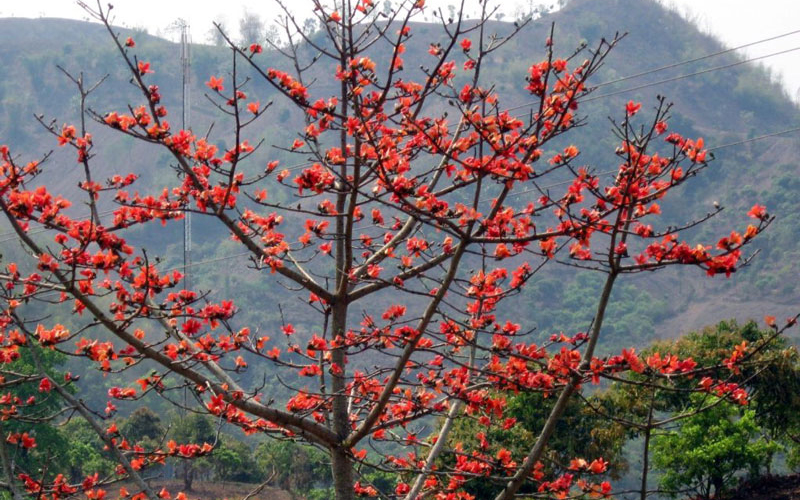 Legend of the Silk Cotton Tree
Legend of the Silk Cotton Tree
Feng Shui Significance of Silk Cotton Trees
Silk cotton trees symbolize vows, promises, and enduring love. The blooming season of these trees also marks the arrival of summer, representing renewed energy, abundance, and happiness in life.
Additionally, silk cotton trees are associated with the simple and rustic beauty of Vietnamese countryside. In the past, people believed that these trees could ward off evil spirits and bring peace to their lives.
Characteristics and Classification of Silk Cotton Trees
Silk cotton trees thrive in tropical and subtropical climates. They grow straight and reach heights of 15 to 20 meters. The leaves are deep green and about 8 to 10 centimeters long, usually shedding during winter. The flowers have five petals and are bright red, blooming in spring, typically from March to April. After the flowers wither, the fruits of the silk cotton tree appear.
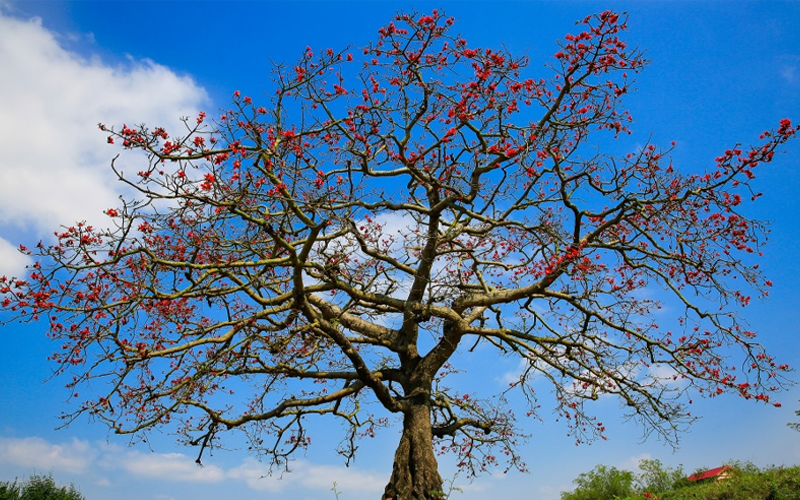 Characteristics and Classification of Silk Cotton Trees
Characteristics and Classification of Silk Cotton Trees
2 Benefits of Silk Cotton Trees
Silk cotton trees are often used for home decoration, adding beauty and vibrancy to living spaces. In Eastern medicine, various parts of the tree have medicinal uses: the bark helps reduce heat and inflammation, while the flowers can be used to make tea and detoxify the body, among other benefits.
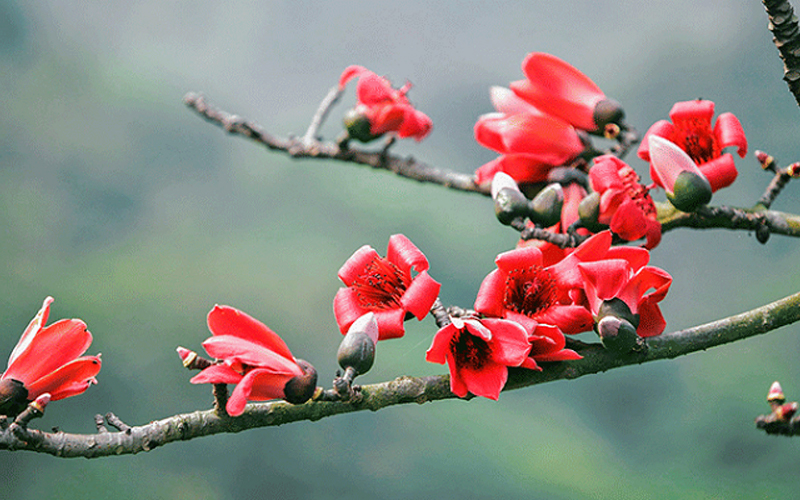 Benefits of Silk Cotton Trees
Benefits of Silk Cotton Trees
The fruits of the silk cotton tree, when ripe, can be used to produce soft and cool cotton for bedding and pillows. Additionally, the flowers, leaves, and roots can be used to create delicious and nutritious dishes.
Furthermore, silk cotton trees have several other remarkable uses: the flowers can be used to make red dye, and the bark can be utilized to make ropes, to name a few.
3 How to Grow and Care for Silk Cotton Trees
Growing Silk Cotton Trees at Home
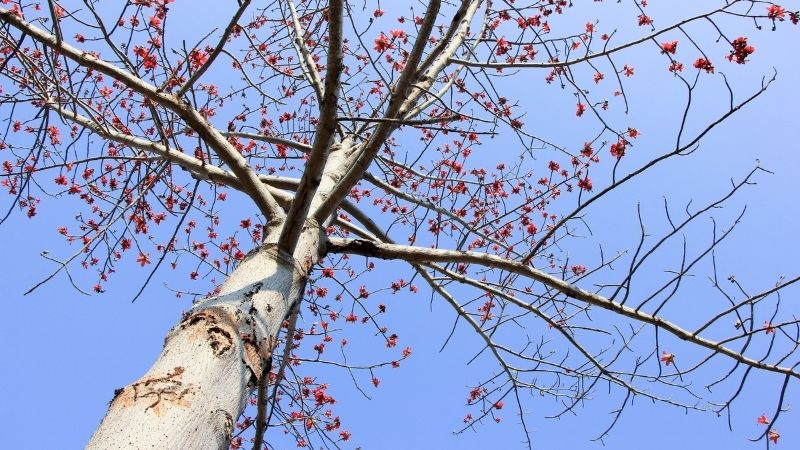 Growing Silk Cotton Trees at Home
Growing Silk Cotton Trees at Home
To grow a silk cotton tree, simply choose a healthy seedling, free from pests and diseases, select a suitable planting location, dig a hole, and place the seedling in it. Then, fill the hole with soil and water the tree sufficiently to maintain moisture.
Caring for Silk Cotton Trees
- Soil selection: Choose soil that is rich in nutrients and has a good balance of clay, sand, and organic matter. This will ensure better growth and reduce the time needed for care.
- Planting method: Silk cotton trees can be grown from seeds or cuttings. Using cuttings is generally faster and more efficient.
- Watering: During the tree’s growth phase or when it’s about to flower, water it generously twice a week to ensure it receives adequate hydration for optimal growth. You can increase the frequency of watering as the tree prepares to bloom.
- Fertilizing: Fertilizer is not necessary if the soil is already nutrient-rich. However, when the tree is about to flower, you can dilute fertilizer with water and apply it every 7 to 10 days. This will encourage larger and more beautiful blooms.
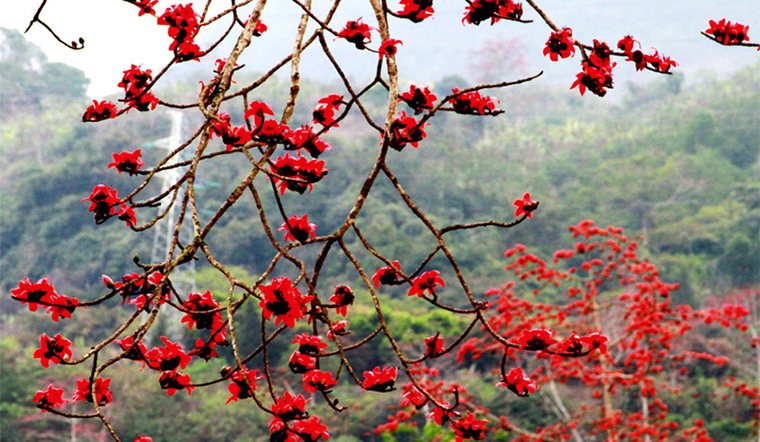 Caring for Silk Cotton Trees
Caring for Silk Cotton Trees
Notes on Growing and Caring for Silk Cotton Trees
- Before planting, apply root growth stimulants like N3M, Bimix super root, or Roots 2 to enhance root development.
- When planting from seeds, purchase them from reputable stores to ensure high-quality seeds with a good germination rate.
- Choose healthy branches from a mother tree and propagate them by cutting. Over time, these cuttings will develop roots and establish themselves in the soil.
- Timing: Silk cotton trees are easy to grow, but they won’t thrive if planted in winter. Therefore, avoid planting during this season, and you can plant them at any other time of the year.
4 Five Beautiful Images of Silk Cotton Trees
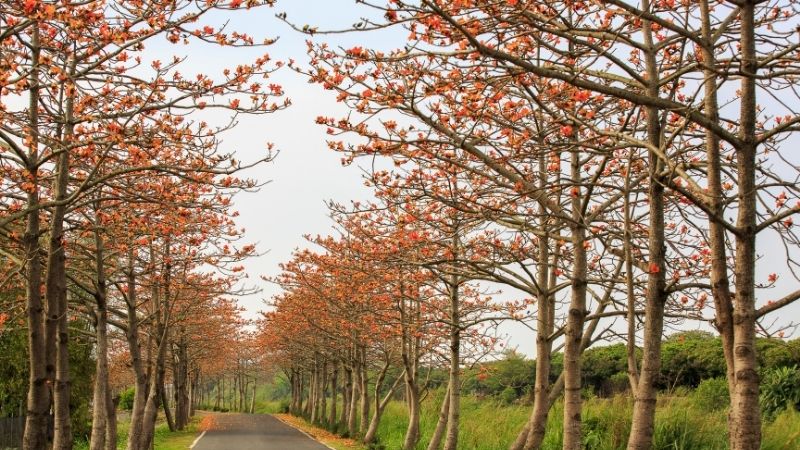 Silk cotton trees have the scientific name Bombax ceiba
Silk cotton trees have the scientific name Bombax ceiba
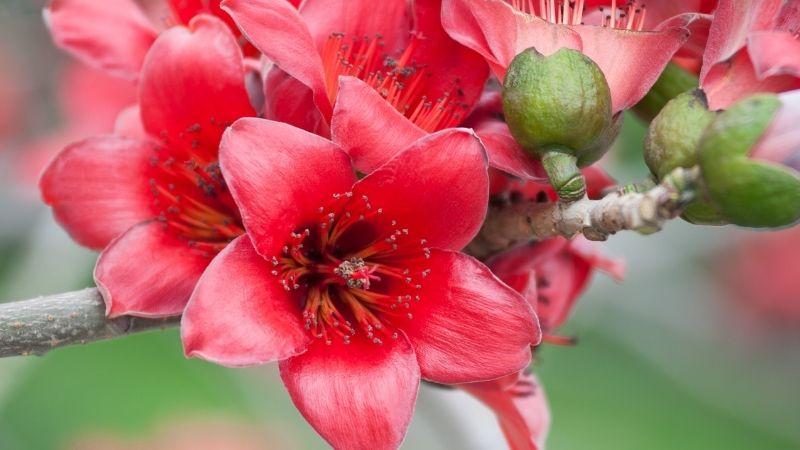 Native to India
Native to India
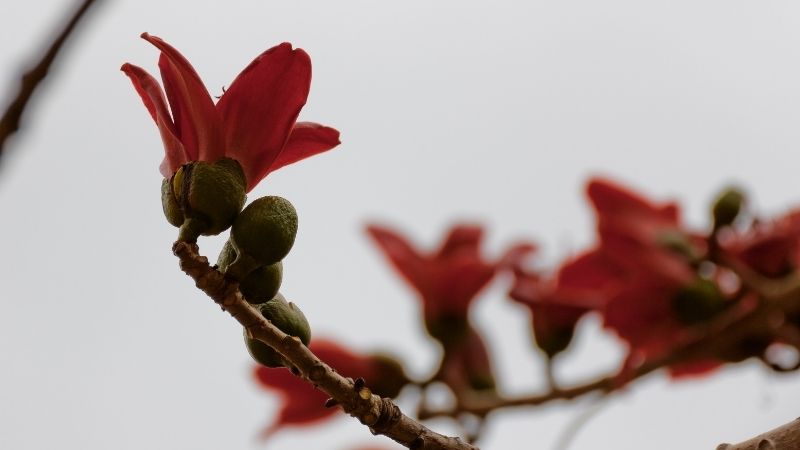 Beloved by the people of Northwest Vietnam
Beloved by the people of Northwest Vietnam
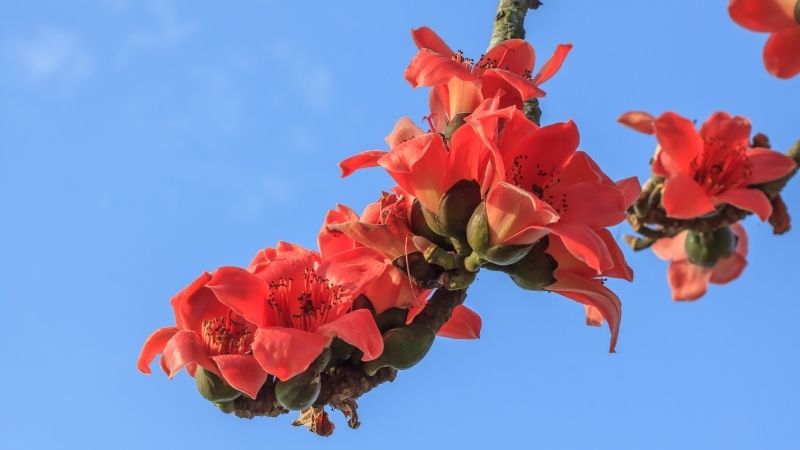 Thrives in tropical and subtropical climates
Thrives in tropical and subtropical climates
 Deep green leaves, about 8 to 10 centimeters long
Deep green leaves, about 8 to 10 centimeters long
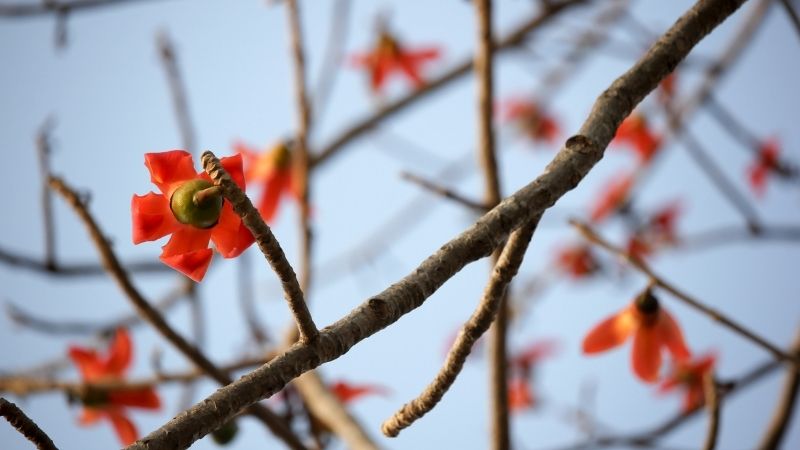 Bright red flowers with five petals, blooming in spring
Bright red flowers with five petals, blooming in spring
This article has provided a comprehensive overview of silk cotton trees, including their significance, characteristics, benefits, and care instructions. Hopefully, you found it informative and useful!

































